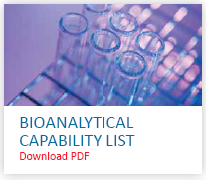Highly variable drugs products (HVDP) are those whose intra-subject variability for a parameter is larger than 30%. For HVDP the acceptance interval for Cmax may in certain cases be widened to a maximum of 69.84 – 143.19%. For the acceptance interval to be widened the bioequivalence study must be of a replicate design where it has been demonstrated that the within-subject variability for Cmax of the reference compound in the study is >30%. The applicant should justify that the calculated intra-subject variability is a reliable estimate and that it is not the result of outliers.
The request for widened interval must be prospectively specified in the protocol and have to be supported by risk assessment on the safety of drugs. On the other side, the acceptance range of AUC should remain at 80.00 – 125.00% regardless of variability.
The extent of the widening is defined based upon the within-subject variability seen in the bioequivalence study using scaled-average-bioequivalence according to [U, L] = exp [±k·sWR]. Using this methodology, the table below gives examples of how different levels of variability lead to different acceptance limit.
| Within-subject CV (%) | Lower Limit | Upper Limit |
| 30 | 80.00 | 125.00 |
| 35 | 77.23 | 129.48 |
| 40 | 74.62 | 134.02 |
| 45 | 72.15 | 138.59 |
| ≥50 | 69.84 | 143.19 |




0 Responses to “What is a highly variable drug or drug product and what is the bioequivalence acceptance criteria for this product?”